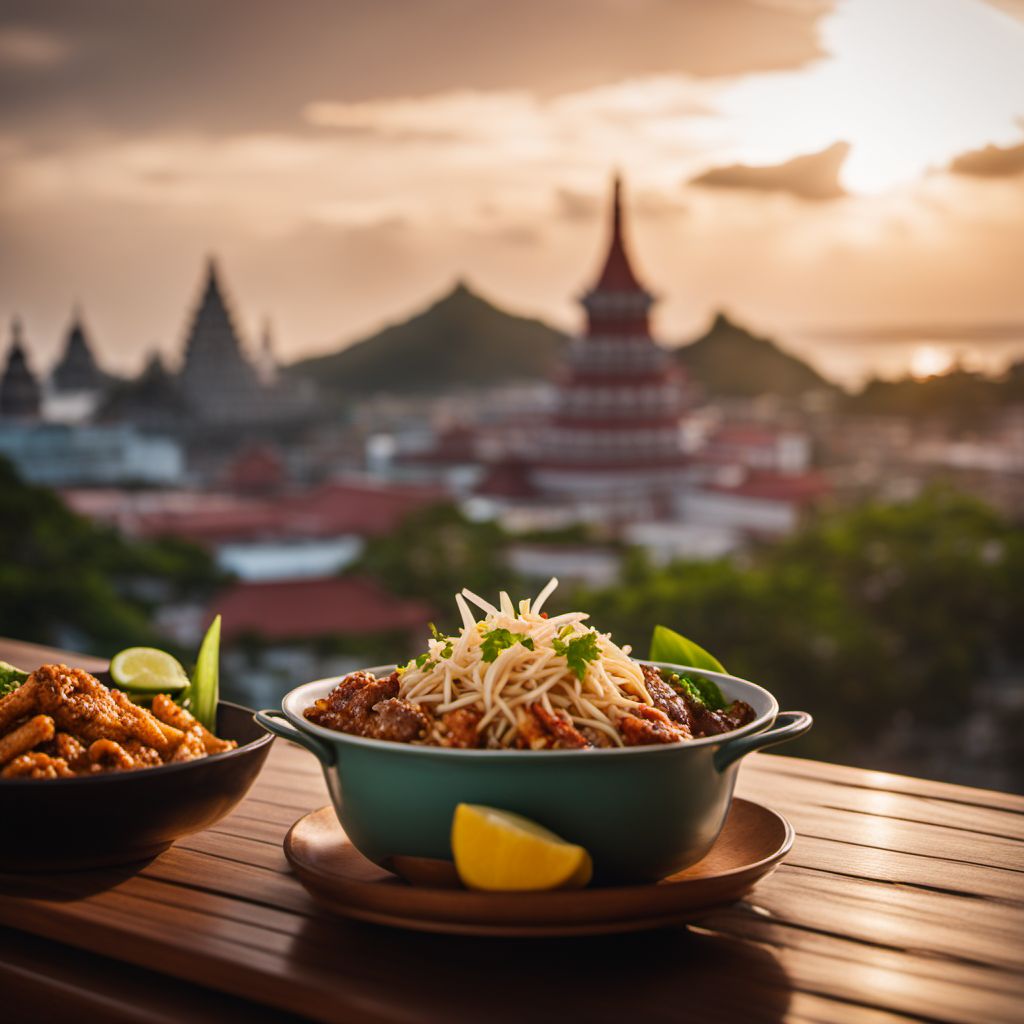
Cuisine
Filipino cuisine
Filipino cuisine is known for its bold flavors and unique combinations of sweet, sour, and savory. The cuisine is heavily influenced by the country's history, with Malay, Chinese, Spanish, and American influences all playing a role. Filipino cuisine is also known for its use of vinegar and soy sauce, which are used to add flavor and preserve food.
Typical ingredients
Rice, Seafood, Pork, Chicken, Beef, Vegetables, Coconut milk, Vinegar, Soy sauce
Presentation and garnishing
Dishes are often served family-style, with a variety of dishes placed on the table for everyone to share. Garnishes such as fresh herbs and sliced chili peppers are often used to add color and flavor to dishes.
Filipino cuisine is known for its bold flavors and unique combinations of sweet, sour, and savory. The cuisine is a fusion of Malay, Chinese, Spanish, and American influences.
More cuisines from this region...
History
Filipino cuisine has a long and complex history, dating back to the country's pre-colonial era. The cuisine has been influenced by various cultures over the years, including Malay, Chinese, Spanish, and American. Today, Filipino cuisine is a fusion of these influences, and is known for its bold flavors and unique combinations of sweet, sour, and savory.
Cultural significance
Food is an important part of Filipino culture, and is often used in traditional ceremonies and celebrations. Many traditional dishes have Spanish or Chinese roots, due to the country's colonial history. The cuisine is also heavily influenced by Malay and American cuisine.
Health benefits and considerations
Many traditional Filipino dishes are high in protein and fiber, and are made with fresh, healthy ingredients. However, some dishes may be high in fat and sodium, so it is important to eat them in moderation.
Filipino cuisine dishes Browse all »

Latik
Latik is a Filipino dessert made with coconut milk and sugar. It is a sweet and creamy dish that is often used as a topping for other desserts.

Balut
Balut is a Filipino delicacy consisting of a fertilized duck egg that is boiled and eaten in the shell.

Espasol
Espasol is a Filipino rice cake made from glutinous rice flour and coconut milk. It is a popular snack or dessert in the Philippines.

Utan
Vegetable soup
Utan is a traditional Filipino soup made with vegetables and coconut milk.
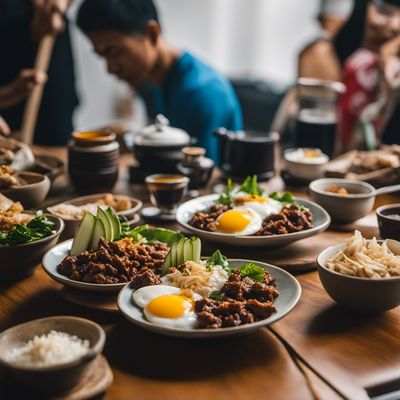
Tapa (Philippines)
Tapa is a popular Filipino breakfast dish made from thinly sliced beef that is marinated in a mixture of soy sauce, calamansi juice, garlic, and sugar. It is usually served...

Nata de coco
Nata de Coco
Nata de coco is a Filipino dessert that is made from coconut water. It is a chewy and refreshing dessert that is perfect for hot summer days.

Latiya
Latiya is a traditional Filipino dessert that is made with layers of sponge cake, custard, and whipped cream. It is a rich and decadent dessert that is often served during...

Bibingka
Bibingka is a traditional Filipino dessert made with rice flour and coconut milk.
Filipino cuisine recipes Browse all »

Uter Adobo
Savory and Tangy Uter Adobo: A Filipino Delicacy
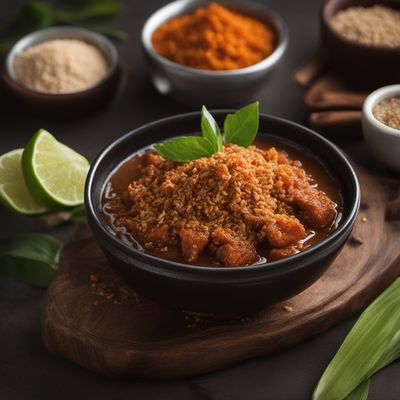
Binangkal
Coconut Delight Balls

Creamy Lemon Sauce
Zesty Lemon Delight: Creamy Filipino Lemon Sauce

Adobo Chicken with a Twist
Savory and Tangy Adobo Chicken with a Flavorful Twist

Kalamai: A Sweet Delight from the Philippines
Golden Corn Delight: A Taste of Filipino Sweetness
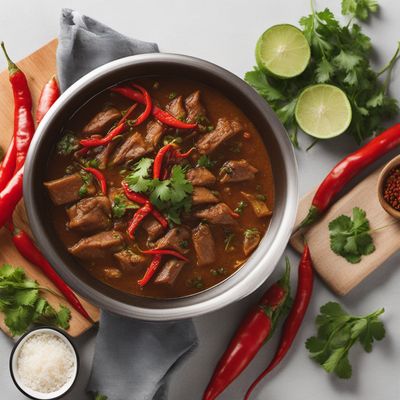
Papaitan: Filipino Bitter Stew
Bitter Delight: A Flavorful Journey through Filipino Papaitan
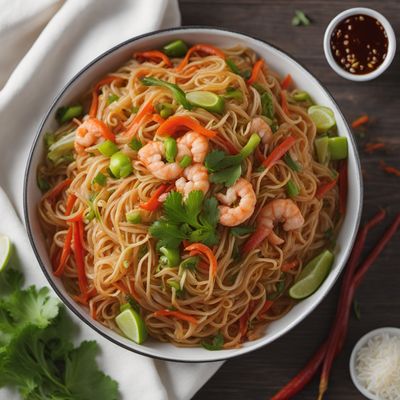
Pancit Bato with a Twist
Savory Noodles from the Philippines: Pancit Bato with a Flavorful Twist

Kilawin: A Tangy Filipino Delight
Zesty Seafood Kilawin: A Burst of Filipino Flavors
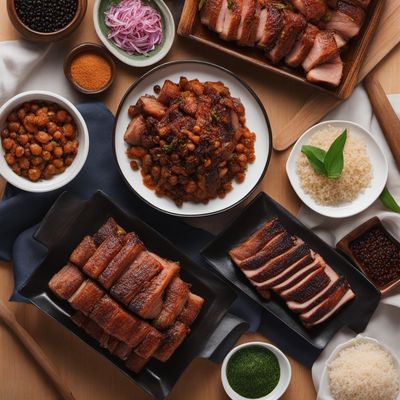
Crispy Pork Belly Delight
Golden Crunch: Crispy Lechon Kawali
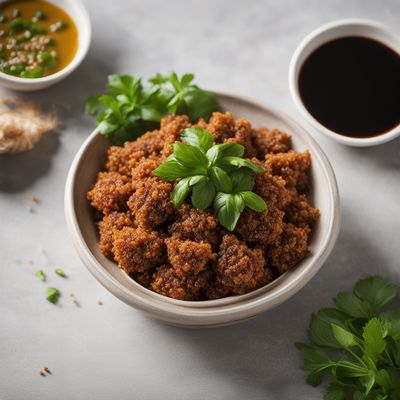
Bola-Bola with a Twist
Savory Meatballs with a Filipino Flair

Sinigang with a Twist
Tropical Sour Soup: Sinigang with a Burst of Flavor

Stuffed Squid Filipino Style
Squid Fiesta: A Burst of Flavors from the Sea